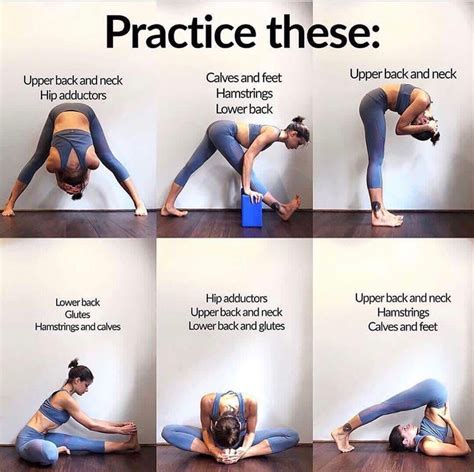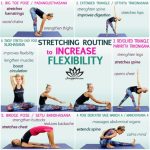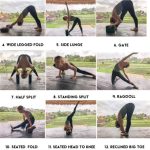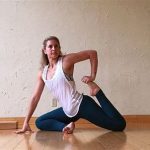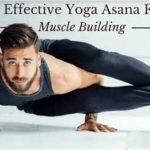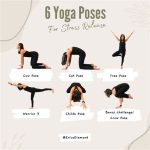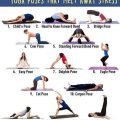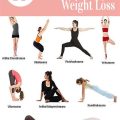Unlocking Flexibility: The Best Yoga Flow for Tight Muscles
Yoga has long been regarded as one of the most effective practices for increasing flexibility, relieving muscle tension, and promoting overall well-being. For individuals with tight muscles, finding the right yoga flow can make a profound difference. In this guide, we’ll explore the most effective yoga practices to release tightness, restore mobility, and support your body’s natural alignment. This flow will target common areas of tension—hips, hamstrings, shoulders, and lower back—while promoting flexibility and relaxation.
Introduction: Understanding Muscle Tightness and Yoga’s Role in Flexibility
Tight muscles can stem from a range of causes, including sedentary lifestyles, overuse, or even stress. This restriction often leads to discomfort, limited mobility, and an increased risk of injury. Yoga, however, offers a holistic solution by combining movement with breathwork, helping to lengthen and release muscles, restore balance, and enhance flexibility. In this article, we’ll focus on a yoga flow specifically designed to address and alleviate muscle tightness, while discussing the broader benefits of regular practice for flexibility and muscular health.
Key Concepts in Addressing Muscle Tightness Through Yoga
To create an effective yoga flow for tight muscles, it’s important to first understand the key concepts that guide the practice:
- Stretch Reflex: A natural response where muscles contract to protect against overstretching. Yoga encourages gradual muscle relaxation to prevent overstretching.
- Active Stretching: Involves engaging muscles while stretching, which increases flexibility over time.
- Breath and Movement Synchronization: Linking breath with movement promotes relaxation and helps release tension.
- Consistency: Regular practice is essential for long-term flexibility improvements.
- Mind-Body Connection: Yoga emphasizes the connection between mental calmness and physical release, which aids in muscle relaxation.
Historical Context: Yoga’s Evolution as a Tool for Flexibility
Yoga has its roots in ancient India, where it was traditionally practiced to unify the body, mind, and spirit. Initially a spiritual practice, it evolved into a multifaceted approach to health. Over centuries, yoga postures (asanas) have been adapted to promote physical benefits, such as flexibility and muscle relaxation. While yoga was historically intertwined with meditation, it now occupies a vital role in physical fitness and rehabilitation, particularly for those seeking relief from muscle tension.
Current State Analysis: The Science Behind Yoga and Muscle Flexibility
Scientific studies have repeatedly shown that yoga is beneficial for improving muscle flexibility and range of motion. It works by targeting muscle groups prone to tightness, such as the hamstrings, lower back, and shoulders. The practice of holding poses and using controlled breathing techniques promotes muscle lengthening, reduces the stretch reflex, and enhances muscle elasticity over time.
For individuals with chronically tight muscles, yoga can also aid in injury prevention by loosening tight areas and strengthening surrounding muscle groups, creating a balanced and supportive framework for the body.
Practical Applications: A Targeted Yoga Flow for Tight Muscles
The following yoga flow is designed to stretch and release commonly tight muscle groups while increasing flexibility and relaxation:
- Cat-Cow Pose (Marjaryasana-Bitilasana): Helps to release tension in the spine and warms up the back muscles.
- Downward Facing Dog (Adho Mukha Svanasana): Stretches the hamstrings, calves, and shoulders while lengthening the spine.
- Forward Fold (Uttanasana): Targets the hamstrings and lower back.
- Low Lunge (Anjaneyasana): Stretches the hip flexors and quadriceps.
- Pigeon Pose (Eka Pada Rajakapotasana): Opens the hips and glutes, relieving tension.
- Seated Forward Bend (Paschimottanasana): Focuses on the hamstrings and lower back.
- Reclined Twist (Supta Matsyendrasana): Releases tension in the spine and lower back.
- Child’s Pose (Balasana): Provides a gentle stretch for the lower back and hips, while promoting relaxation.
Case Studies: How Regular Yoga Practice Improves Flexibility
Many individuals have seen significant improvements in flexibility and reduction in muscle tightness through consistent yoga practice. Below are some notable examples:
| Case Study | Initial Condition | Yoga Routine | Results |
|---|---|---|---|
| Athlete with Tight Hamstrings | Severe tightness, limited mobility | Weekly yoga flow focusing on hamstrings and hip flexors | Improved hamstring flexibility, fewer injuries |
| Office Worker with Lower Back Pain | Chronic tightness in the lower back from prolonged sitting | Daily 20-minute yoga practice targeting spine and hips | Reduction in back pain, increased mobility |
| Sedentary Adult with Shoulder Tightness | Restricted shoulder movement, chronic pain | Twice-weekly yoga sessions with shoulder-focused stretches | Improved range of motion, pain relief |
Stakeholder Analysis: Who Benefits from Yoga for Tight Muscles?
Yoga for tight muscles offers significant benefits for various stakeholders, including:
- Athletes: Improved flexibility, reduced injury risk.
- Office Workers: Relief from tension caused by prolonged sitting.
- Older Adults: Enhanced mobility and reduced stiffness.
- Yoga Instructors: Opportunity to offer specialized classes targeting tight muscles.
- Healthcare Professionals: Yoga as a recommended practice for rehabilitation and flexibility.
Implementation Guidelines: Integrating Yoga for Flexibility into Daily Life
For optimal results, the following guidelines can help you incorporate yoga into your routine:
- Consistency: Practice 3-4 times per week for 20-30 minutes.
- Warm-Up: Always start with a gentle warm-up to prepare muscles.
- Listen to Your Body: Avoid forcing stretches; focus on gradual improvement.
- Breathing: Synchronize deep, mindful breathing with movement to aid muscle relaxation.
- Rest Days: Allow muscles to recover with rest or gentler yoga sessions.
Ethical Considerations: The Balance Between Flexibility and Safety
While yoga is highly beneficial, it’s important to maintain ethical practices to avoid injury or excessive strain. Encouraging students or practitioners to prioritize safety over extreme flexibility is essential. Teachers should emphasize mindful progress, particularly when working with beginners or individuals with pre-existing conditions.
Limitations and Future Research
While yoga has proven effective for improving flexibility and relieving muscle tension, some limitations remain. The practice’s impact on individuals with chronic or severe muscle tightness may require additional research. Moreover, further studies are needed to assess the long-term benefits of yoga across diverse populations. Future research could also explore combining yoga with other modalities, such as physical therapy or strength training, to create even more effective approaches for flexibility.
Expert Commentary
Experts agree that yoga is one of the best tools for increasing flexibility and reducing muscle tension. Its ability to adapt to different body types and levels of flexibility makes it a highly versatile practice. While it may take time for results to become noticeable, consistent practice leads to long-lasting changes in muscle elasticity, mobility, and overall well-being. The most important aspect is to approach yoga with patience, mindfulness, and a commitment to gradual improvement.
